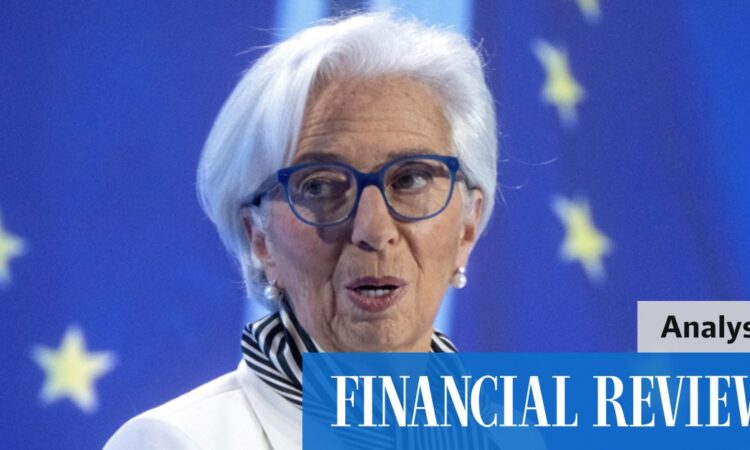
All up, it looks pretty safe for the ECB to start cutting interest rates – assuming inflation keeps shifting down. The rate eased to 2.8 per cent in January, from 2.9 per cent the previous month.
‘Anyone’s guess’
So when will the rate cut happen? Many say June, though Capital Economics says even April is a possibility. Oxford Economics shrugged the shoulders: “The timing and magnitude of rate cuts by the ECB later this year are anyone’s guess.”
One reason for the uncertainty is that the prognostications of the various national central bankers on the ECB Governing Council are hard to average out. There are hardened hawks and determined doves, and the public commentary can ping from one to the next.
The voices that market watchers heed most keenly are those of the chief economist, Philip Lane, and the German academic economist Isabel Schnabel.
Lane’s recent public musings have sounded doveish, but noncommittally so. “The trend is very good, we want it to continue, and we have some time left,” he told Spanish television last week.
“You could hear me and other members of the governing council saying that we think the next move is to cut interest rates, but the exact timing depends on the data.”
In a speech on February 8, he said inflation had slowed more quickly than his team had expected, but he was still eyeing off wages growth, fiscal policy and firms’ input costs.
He said the ECB didn’t want to keep rates too high for too long, but didn’t want to risk moving too soon. To be sure of getting firmly back to the inflation target, Europe “needs to be further along in the disinflation process”.
Schnabel made much the same case in a Financial Times interview a day earlier. “The last mile remains a concern,” she said. “We are observing a slowdown in the disinflationary process that is typical for the last mile.
“This is very closely connected to the dynamics of wages, productivity and profits.”
Things might get clearer on March 7, the ECB’s next monetary policy announcement date, because the bank will also release its latest economic projections. It could be a perception-shifting, market-moving moment.
Sticky situation
In Britain, meanwhile, data last week showed the economy narrowly dropping into recession in the fourth quarter.
But since there are already signs that the economy will pull itself out of the hole by mid-year, the BoE doesn’t necessarily need to worry too much about how tight monetary policy is. Like the ECB, it can focus on the prices and wages data.
Inflation lingered at 4 per cent in January rather than a forecast pick-up. Declining energy prices and a straitened economy could get the rate back to the 2 per cent target as soon as April.
That’s probably why markets are expecting the BoE to follow the Fed and start chopping rates not long thereafter. But some members of the BoE’s monetary policy committee are not quite ready to get out the scissors and start snipping.
MPC external member Megan Greene observed last week that services inflation is higher in Britain than in the US or the eurozone. Wage pressures also remain stronger in Britain, partly because elevated inflation expectations are taking longer to unwind.
She also said that Britain, at least partly because of Brexit, has a tighter supply side than the US. This means a growing UK economy will trigger inflation more quickly than would happen in America.
“I think policy will need to remain restrictive for some time in order for inflation to sustainably return to target,” Greene said. She reckoned the policy was tight enough to achieve that, but “I would need to see further evidence that inflation persistence is less embedded than previously feared before I would consider voting to loosen policy”.
The governor, Andrew Bailey, made pretty clear in early February that the bank would cut once the inflation news improved – and he seemed to make little effort to dissuade markets of their punts on a mid-year rate cut.
The MPC doesn’t meet again until March 21. Most members are unlikely to be ready to cut by then. If – and it’s a big if – the BoE is to leapfrog the Fed, the meeting to watch is probably May 9.





